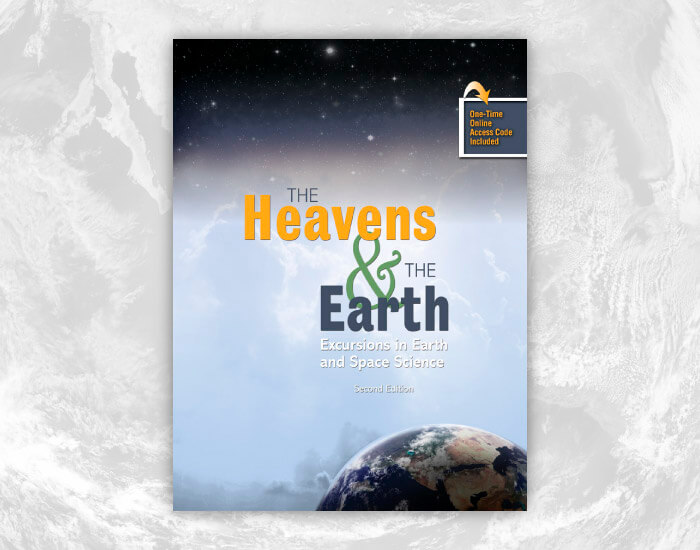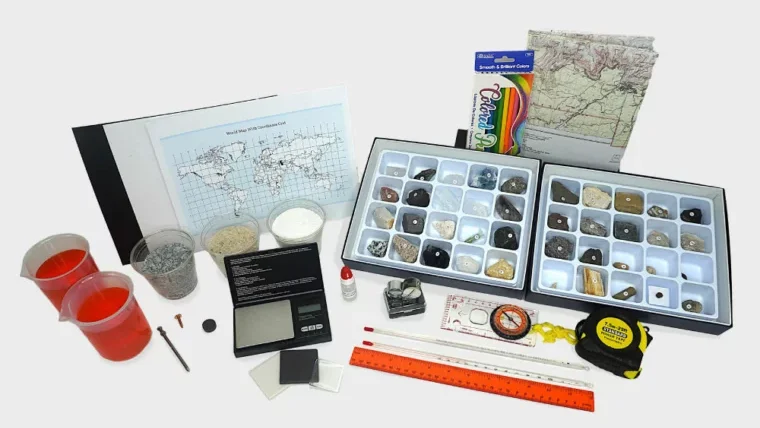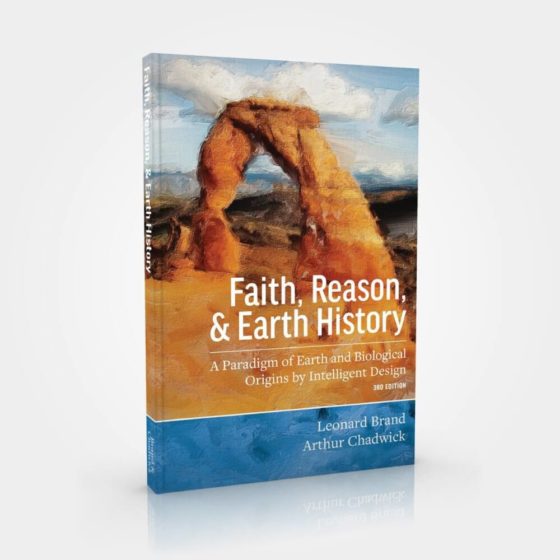Earth & Space Science
-
How This Class Works3 Steps
-
Unit 1: Science and the Bible
Lesson 1: Introduction to Earth Science9 Steps|2 Quizzes-
Read from “The Heavens and the Earth”
-
Watch "Two Models of Earth History" (50 min video)
-
Read from "The Heavens and the Earth"
-
Watch "What is Earth Science? How Do We Do Science?" (42 min video)
-
Lesson 1 - Key Terms
-
Lesson 1 - Review Questions
-
Lesson 1 - Review Questions (Answers)
-
(+) Scripture Study - Psalm 19, Genesis 1
-
(+) Watch the film 'Is Genesis History?'
-
Read from “The Heavens and the Earth”
-
Unit 2: Rocks and MineralsLesson 2: Minerals7 Steps|3 Quizzes
-
Lesson 3: The Rock Cycle and Igneous Rocks8 Steps|2 Quizzes
-
Lesson 4: Sedimentary and Metamorphic Rocks8 Steps|2 Quizzes
-
Lesson 5: Rock Identification Lab1 Step|2 Quizzes
-
Unit 2 Review2 Quizzes
-
Unit 3: Tectonics and VolcanoesLesson 6: Tectonics7 Steps|2 Quizzes
-
Lesson 7: Geologic Forces7 Steps|2 Quizzes
-
Lesson 8: Earthquakes9 Steps|2 Quizzes
-
Read from "The Heavens and the Earth"
-
Watch "Earthquakes" (54 min video)
-
Lab: Plate Tectonics and Earthquakes
-
Read from "The Heavens and the Earth"
-
Watch "Interior of the Earth and Geophysics (30 min video)
-
Lesson 8 - Key Terms
-
Lesson 8 - Review Questions
-
Lesson 8 - Review Questions (Answers)
-
(+) Scripture Study - Earthquakes
-
Read from "The Heavens and the Earth"
-
Lesson 9: Volcanoes10 Steps|3 Quizzes
-
Read from "The Heavens and the Earth"
-
Watch "Volcanoes" (54 min video)
-
Read from "The Heavens and the Earth"
-
Watch "Mount St. Helens" (52 min video)
-
Lab: Google Earth Volcanoes
-
Lesson 9 - Key Terms
-
Lesson 9 - Review Questions
-
Lesson 9 - Review Questions (Answers)
-
(+) Scripture Study - Volcanoes
-
(+) Learn more about Mt. St. Helens
-
Read from "The Heavens and the Earth"
-
Unit 3 Review2 Quizzes
-
Unit 4: Dating, Earth History, and Noah's FloodLesson 10: Relative Dating6 Steps|2 Quizzes
-
Lesson 11: Absolute Dating9 Steps|2 Quizzes
-
Read from "The Heavens and Earth"
-
Watch "Absolute Dating (Radioactive Dating)" (44 min video)
-
Read from "The Heavens and the Earth"
-
Watch "Scientific Evidence for a Young Earth" (35 min video)
-
Lab: Absolute Dating
-
Lesson 11 - Key Terms
-
Lesson 11 - Review Questions
-
Lesson 11 - Review Questions (Answers)
-
(+) Watch "Set In Stone"
-
Read from "The Heavens and Earth"
-
Lesson 12: Fossils11 Steps|2 Quizzes
-
Read "What is Paleontology?"
-
Read "What is the Fossil Record?"
-
Watch "The Fossil Record" (55 min video)
-
Read "Fossilization and the Science of Taphonomy"
-
Lab: Fossil Identification
-
Lesson 12 - Key Terms
-
Watch "Dinosaurs and the Bible" (39 min video)
-
Lesson 12 - Review Questions
-
Lesson 12 - Review Questions (Answers)
-
(+) Scripture Study - Job 40-41
-
(+) The Great Alaskan Dinosaur Adventure (book)
-
Read "What is Paleontology?"
-
Lesson 13: Earth's History - Two Contrasting Views5 Steps|2 Quizzes
-
Lesson 14: Noah's Flood6 Steps|2 Quizzes
-
Lesson 15: Geologic History - Lab5 Steps
-
Lesson 16: Units 1-4 Review (+ Documentary Film)2 Steps|2 Quizzes
-
Unit 5: Earth's Surface: Water and ProcessesLesson 17: Weathering6 Steps|2 Quizzes
-
Lesson 18: Mass Wasting6 Steps|2 Quizzes
-
Lesson 19: Streams8 Steps|1 Quiz
-
Read from "The Heavens and the Earth"
-
Watch "Streams" (48 min video)
-
Read from "The Heavens and the Earth"
-
Watch "The Missoula Flood and Channeled Scabland" (15 min video)
-
Lesson 19 - Key Terms
-
Lesson 19 - Review Questions
-
Lesson 19 - Review Questions (Answers)
-
(+) Scripture Study - Ecclesiastes 1:5-7
-
Read from "The Heavens and the Earth"
-
Lesson 20: Groundwater5 Steps|2 Quizzes
-
Unit 6: Earth's FeaturesLesson 21: Glaciers and Deserts8 Steps
-
Lesson 22: Earth's Resources5 Steps|1 Quiz
-
Lesson 23: Oceans4 Steps
-
Lesson 24: Coasts4 Steps
-
Unit 7: Earth's AtmosphereLesson 25: Earth's Atmosphere4 Steps
-
Lesson 26: Climate Change6 Steps|1 Quiz
-
Lesson 27: Atmospheric Processes5 Steps
-
Lesson 28: Weather5 Steps|1 Quiz
-
Unit 8: SpaceLesson 29: Our Solar System
-
Lesson 30: Beyond Our Solar System
-
Lesson 31: The Origin of the Universe
-
Lesson 32: Units 5-8 Review1 Step
What You Need for This Course

1. Textbook: The Heavens and the Earth
This textbook provides the primary reading for the course. You can use either the 2nd or 3rd edition of the book.
It is available in two formats:
- Paperback 3rd Edition available at Compass Classroom. Buy here.
- Digital 3rd Edition rental available at Kendall Hunt. Buy here.
There are also used versions of the book available at various resellers online.
2. Lab Kit: Cornerstone Earth and Space Science Geology Kit

If you choose to do the labs associated with the class, you will also need a geology lab kit from Cornerstone Supply.
Available at Compass Classroom. Buy here.
3. Additional Book: Faith, Reason, & Earth History

In a few of the lessons, Dr. Whitmore recommends you read chapters from the science textbook Faith, Reason, & Earth History by Dr. Leonard Brand. You have a few ways of accessing this book:
- Purchase a hardback from Is Genesis History? or Amazon.
- Download a free digital version (EPUB).
- Download it free on Amazon Kindle.
This is an excellent resource for those wanting to learn more about the creationist views of biology and geology.
4. Lab Journal & Notebook
You will need to take notes during the video lectures. You will also need to write down notes and answers for your labs. Finally, you will need to write down vocabulary words and definitions, as well as write down Review Questions for each lesson.
We would encourage you to write these down by hand instead of using a computer to type it out (although it you must use a computer, you can—we just know that the process of physically writing something down is much better for your comprehension).
Although you are welcome to use a bound notebook or spiral bound notebook, often a 3-ring binder with loose-leaf 3-hole punched paper is more practical. Loose-leaf paper enables you to pull out the sheets you are using for a lecture or lab, then pop them into place when finished. You can also change sheet, move them around, and generally have more control over your notes.
If you’ve taken hand-written notes before, then you may not need any pointers. But if you haven’t, here are a few:
- Don’t try to write everything down. Instead, listen for key words and concepts. Since you will be reading the chapters before each lesson, you will notice new vocabulary and ideas; when Dr. Whitmore speaks about them, write these down, then summarize what he is saying.
- Write in an outline format as much as possible. This means you can put the main topics without indenting, then indent (and number or bullet) the related points he his making below that.
- Use pencil if you find you’d like to erase things and change; pen makes this difficult (unless it is erasable).
- The more you practice note taking, the better you will be at it.
- Once you finish the lecture, go back and review your notes. You will find you will remember more of what he taught.
There are lots of good videos on YouTube showing different methods of note taking. See what works for you.

